The Lapierre XR is a classic 100mm travel World Cup XCO machine. The Lapierre XRM bumps the rear travel up to 110mm and sports a 120mm travel fork up front.
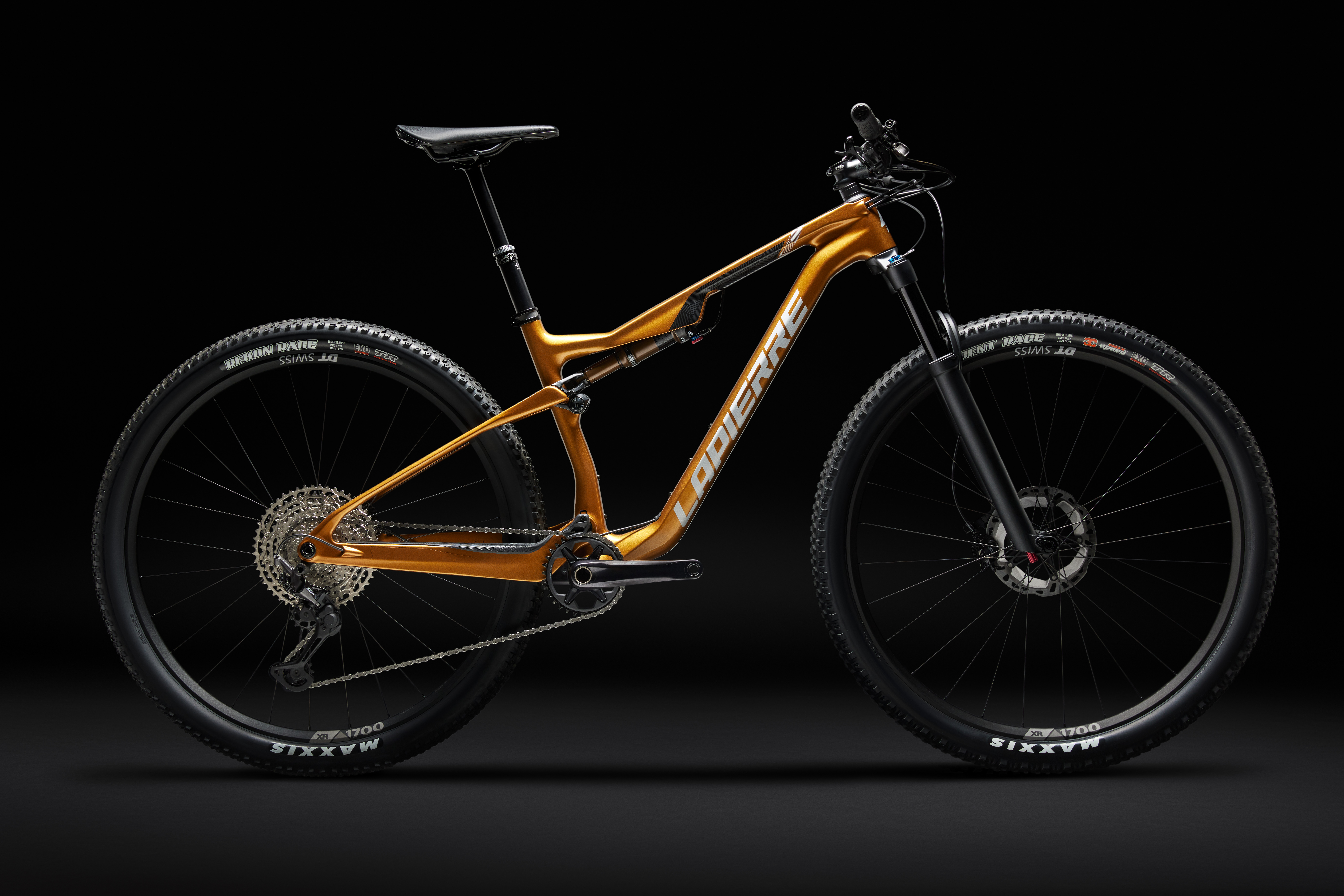
The Lapierre XR has been around since 2013 in some for or other (usually very cross-country racey). For 2022 the XR gains a new flex-stay suspension design and a slightly bigger sibling called the Lapierre XRM.
The ‘M’ appears to stand for Marathon. There will be some crowbarring-in of ‘down country’ at some point no doubt. But, for now at least, the Lapierre XRM is very much a European long-distance mileage mountain bike.










Geometry
The XR has been slightly tweaked in its geometry to better cope with the more technical demands of World Cup and Olympic XC race courses these days. As well as a bit of slackening and lengthening, the new bikes accept wider volume tyres and dropper seatposts.
Latest Singletrack Merch
Buying and wearing our sustainable merch is another great way to support Singletrack
Lapierre rather refreshingly don’t make any grand statements about geo changes but any tweaks will have an effect. The chainstays have got 8mm shorter than previous XR models. The seat angle is 0.5° to 1° steeper depending on frame size. The head angle is 2° to 2.5° slacker.
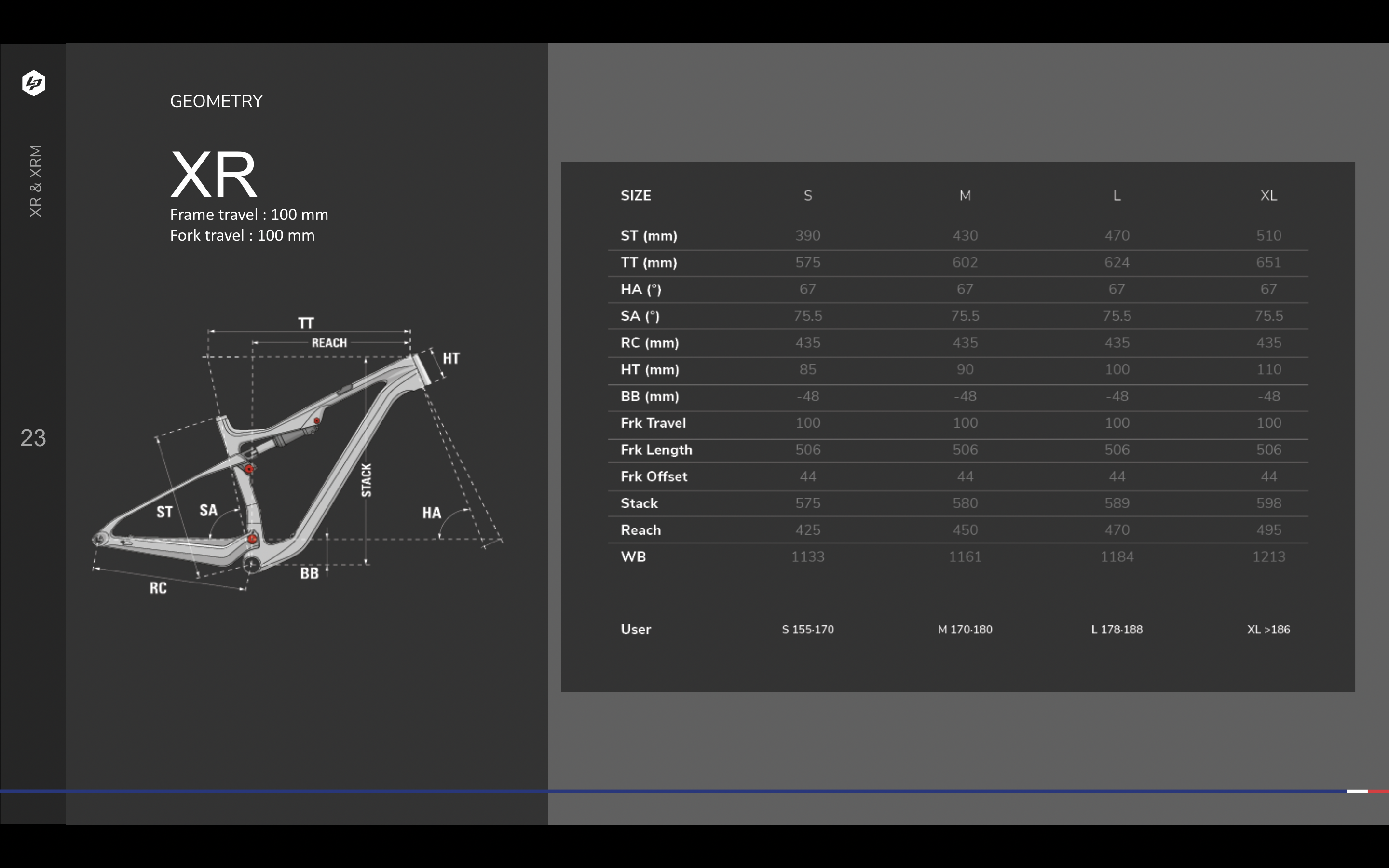
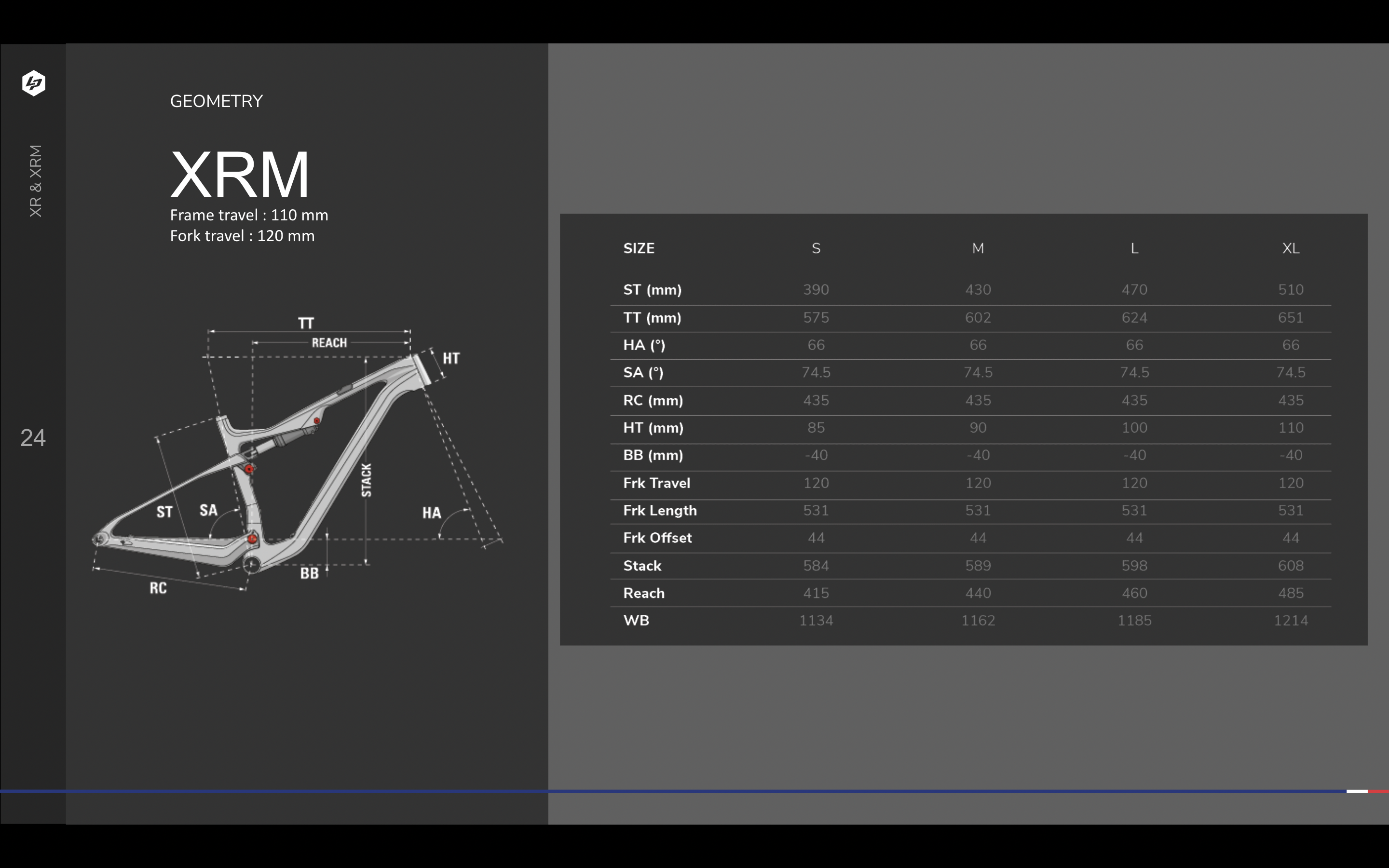
OS
On to the new flex stay suspension design. It’s called Optimised Sensitivity.
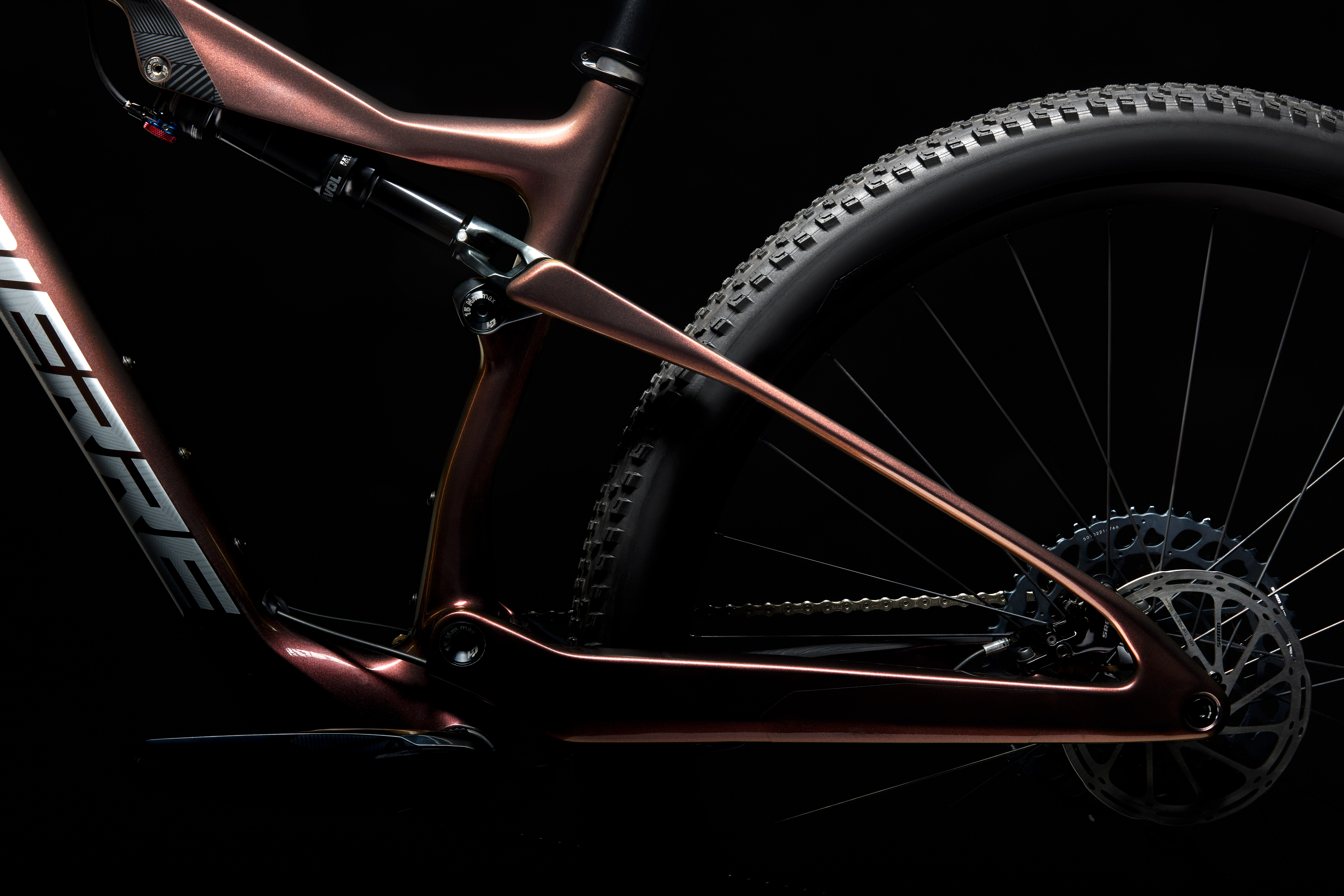
Without a rider on board, the seat stays are under light tension ie. bending slightly from where they’d like to be ‘at rest’.
With a rider on board, and the shock at 26% sag, the seat stays are relieved of their tension.
This design results in the seat stays only needing half the movement of rival brand’s ostensibly similar flex-stay systems. There’s a maximum movement of 11mm between the lower pivot point and the seat stays/rocker link pivot.
The idea here is to bringing suppleness despite removing a pivot point. Lapierre also hint that the system is designed to work in conjunction with a lock-out, ideally remote (on the handlebar/grip).
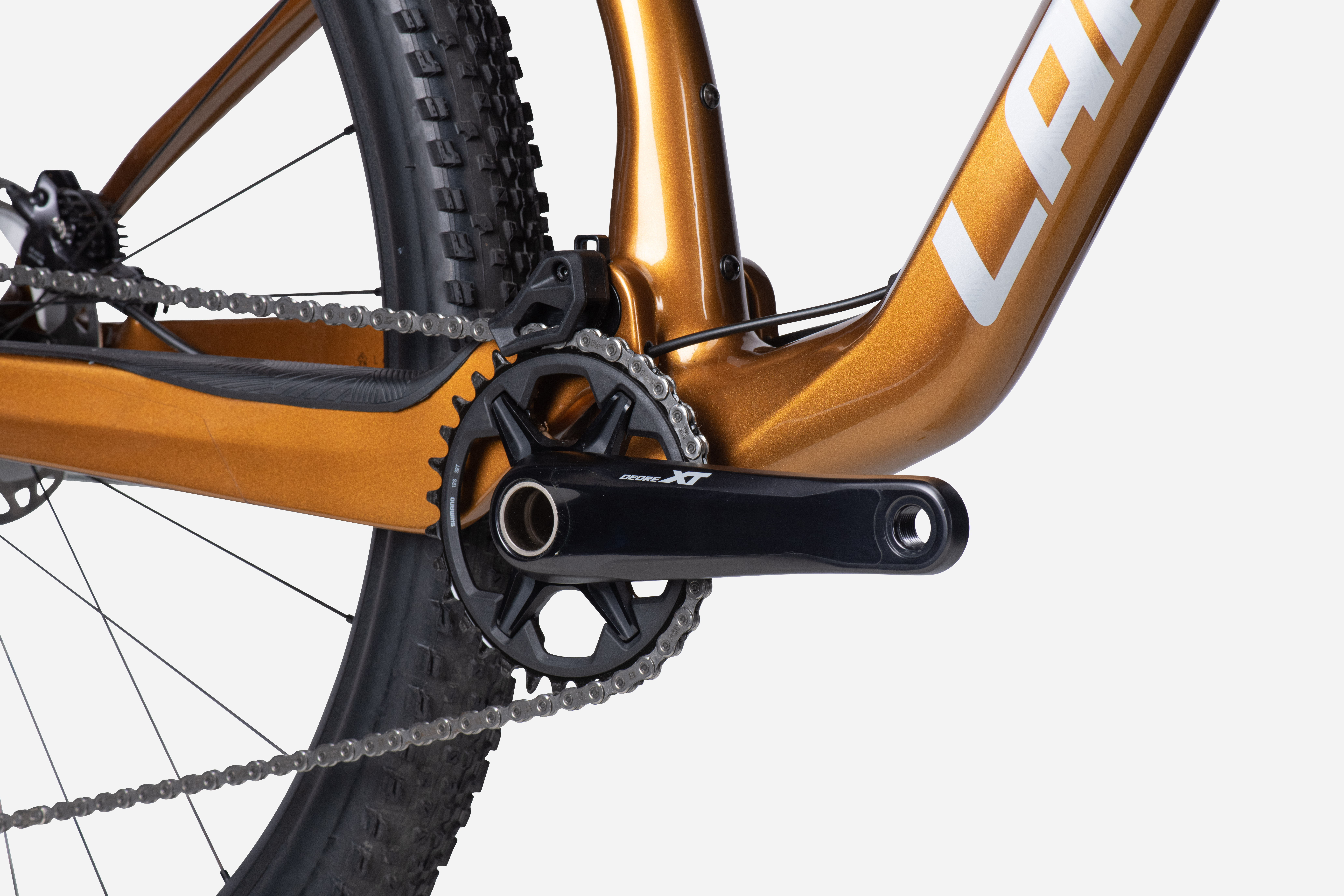
Lapierre state that they’ve counteracted pedal kickback by use of a “high pivot point”. The main pivot appears to be slightly higher than typical/rival flex-stays but it’s not exactly “high pivot idler” high. At the end of the day, there’s a modest amount of travel here and World Cup raceheads will be running all sorts of chainring sizes (38T is the max recommended on the XR/XRM) so we wouldn’t read too much into this aspect really.
Of more interest is the location of the rear shock. It’s right bang underneath the top tube. This means the bikes can accept two water bottles (marathon-tastic). The shock is located in an area of the frame with low stress and requires shorter lengths of cabling to any bar-mounted remote. Saving weight being a big priority all-around with the Lapierre XR and XRM.
Black stuff
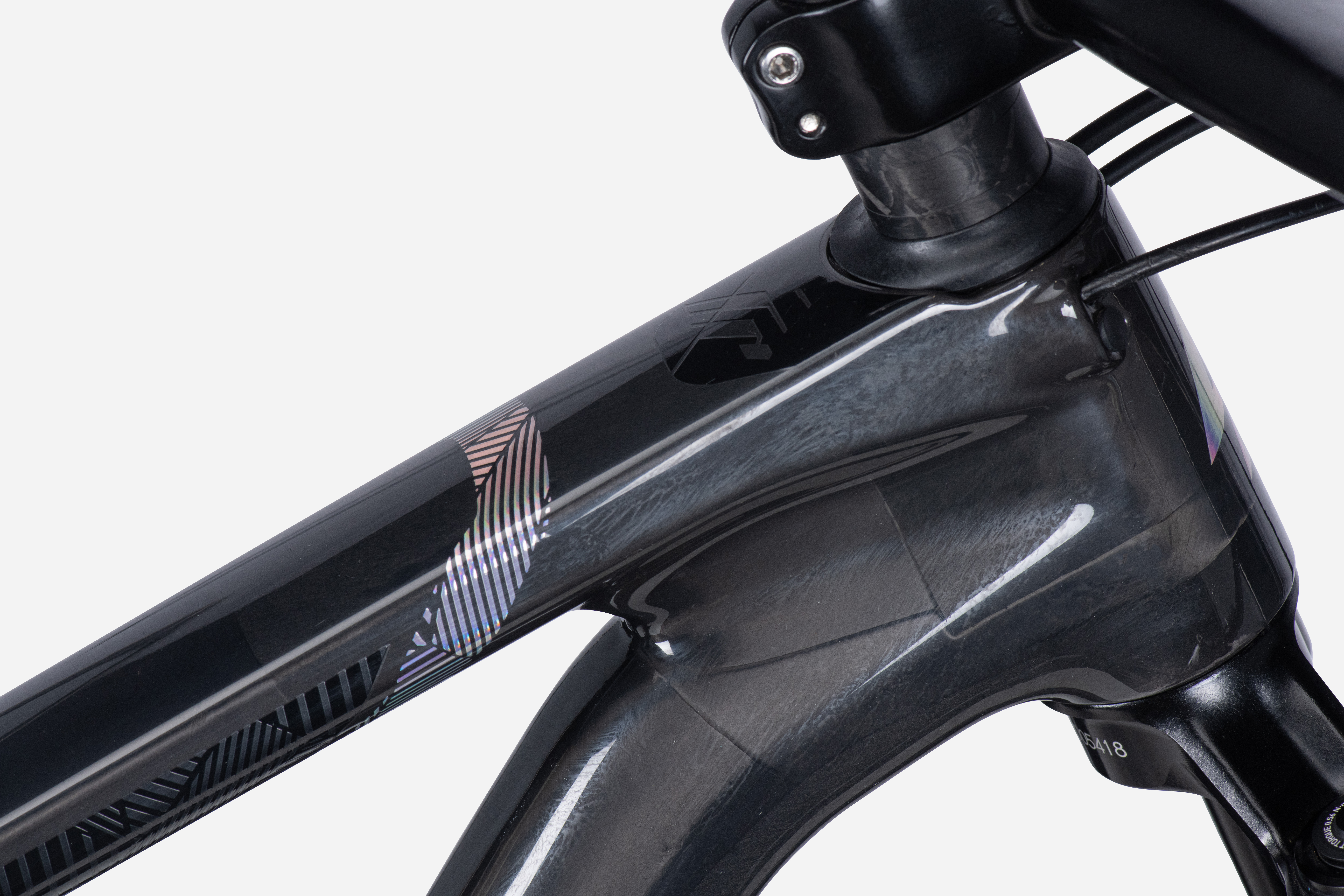
Speaking of saving weight, it will come as no surprise that the new XR and XRM flex-stay bikes are carbon fibre framed.
As ever, with anything carbon fibre, getting some actual concrete information as to the type of carbon or its exact construction is tricky.
All we can really say is that Lapierre call their black stuff ‘UD SLI’ (Uni Directional Super light Innovation, acronym fans). It’s Torayca unidirectional carbon fibre. There are over 300 sheets of carbon fibre per frame. And the frames are formed using a rigid polypropylene mandrel for better compression of the fibres in the mould and, you guessed it, improved weight reduction by expulsion of the most excess resin as possible.
Some claimed weights:
- XR/XRM bare frame: 1,970g
- XR/XRM Team bare frame: 1,772g
- XR/XRM frameset inc. shock, bearings & bolts: 2,236g
- XR/XRM Team frameset inc. shoc, bearings & bolts: 2,038g
We have yet to received any pricing details yet unfortunately. Hopefully we’ll get some more spec and pricing info from Lapierre’s UK distributor – raleigh.co.uk – so we can update this story soon.





